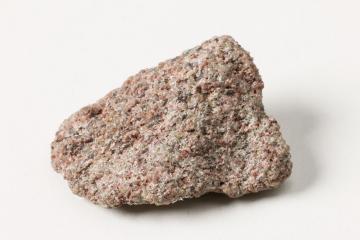
News
November 07, 2025
New Stone of Destiny fragments uncovered by Stirling University expert
NEW research led by Stirling University has revealed the existence and fate of many fragments of the Stone of Destiny, including those secreted away after it was taken from Westminster Abbey by a group of students.
**Stone of Destiny's Hidden Pieces Unearthed in New Research**
New light has been shed on the intriguing history of the Stone of Destiny, thanks to groundbreaking research spearheaded by an expert at Stirling University. The research delves into the often-overlooked fragments of the iconic stone, revealing their existence and, in some cases, their surprising fates.
The Stone of Destiny, also known as the Stone of Scone, has a history shrouded in legend and political significance. For centuries, it was used in the coronation ceremonies of Scottish monarchs before being seized by Edward I of England in 1296 and placed within the Coronation Chair at Westminster Abbey. Its dramatic return to Scotland in 1996 only added to its mystique.
While the main stone is well-documented, the Stirling University research focuses on what happened to the smaller pieces that broke off over the centuries. These fragments, often disregarded, hold vital clues to the stone's journey and the various hands it passed through.
The research particularly highlights the fragments that vanished after the Stone was famously taken from Westminster Abbey in 1950 by a group of Scottish students. This daring act, intended to reignite Scottish nationalism, saw the stone damaged during its removal. The new research uncovers information about where these specific pieces ended up, offering a fascinating glimpse into the aftermath of the audacious heist.
The expert leading the research at Stirling University has meticulously pieced together historical records and accounts to trace the journey of these lost pieces. The findings promise to reshape our understanding of the Stone of Destiny's story, adding depth and nuance to a narrative already rich in intrigue. Understanding the fate of these fragments allows historians to better understand the treatment of the stone throughout its history. It also sheds light on the individuals who came into contact with these pieces, and their motivations for keeping or hiding them. The research is expected to be published shortly and is certain to spark considerable interest among historians and the public alike.
New light has been shed on the intriguing history of the Stone of Destiny, thanks to groundbreaking research spearheaded by an expert at Stirling University. The research delves into the often-overlooked fragments of the iconic stone, revealing their existence and, in some cases, their surprising fates.
The Stone of Destiny, also known as the Stone of Scone, has a history shrouded in legend and political significance. For centuries, it was used in the coronation ceremonies of Scottish monarchs before being seized by Edward I of England in 1296 and placed within the Coronation Chair at Westminster Abbey. Its dramatic return to Scotland in 1996 only added to its mystique.
While the main stone is well-documented, the Stirling University research focuses on what happened to the smaller pieces that broke off over the centuries. These fragments, often disregarded, hold vital clues to the stone's journey and the various hands it passed through.
The research particularly highlights the fragments that vanished after the Stone was famously taken from Westminster Abbey in 1950 by a group of Scottish students. This daring act, intended to reignite Scottish nationalism, saw the stone damaged during its removal. The new research uncovers information about where these specific pieces ended up, offering a fascinating glimpse into the aftermath of the audacious heist.
The expert leading the research at Stirling University has meticulously pieced together historical records and accounts to trace the journey of these lost pieces. The findings promise to reshape our understanding of the Stone of Destiny's story, adding depth and nuance to a narrative already rich in intrigue. Understanding the fate of these fragments allows historians to better understand the treatment of the stone throughout its history. It also sheds light on the individuals who came into contact with these pieces, and their motivations for keeping or hiding them. The research is expected to be published shortly and is certain to spark considerable interest among historians and the public alike.
Category:
Politics